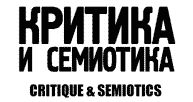DESIGN ASPECT OF THE FORMATION OF MICRO-SPACES IN URBAN ENVIRONMENT
DOI: 10.23951/2312-7899-2019-2-152-159
The paper investigates the problem of the creation of microspaces in the environment of the postindustrial city. In the context of the given period, the city is considered as a complex spatial and social phenomenon, the place of activity of city inhabitants. A number of qualities of a highly comfortable urbanized environment is determined under the lens of ideas about the needs typical for a modern citizen and the comfort of the object and spatial environment of the city. The authors describe the principle of ergocentrism, which extends the boundaries of ergonomics to its macrolevel – “ergonomics of space”. The comparative analysis of architectural and urban planning and design approaches to the creation of microspaces is carried out. The existing architectural typologies of microspaces are considered as part of the urban planning theory. In the frame of the design approach the authors analyze new experimental forms of urban design aimed at finding spatial potential in urbanized environment. The work identifies the need for discovery, scientific understanding and classification of new types of micro-spaces based on a constructive approach and the principle of egocentrism.
Keywords: micro-space, urban design, principle of ergocentrism, typology of micro-spaces, urbanized environment
References:
Gehl 2012 – Gehl Jan. Cities for people. Transl. into Russian. Moscow, 2012.
Kogan 1990 – Kogan L. B. Be the townspeople. Moscow 1990. In Russian.
Krasheninnikov 1988 – Krasheninnikov А. V. Residential quarters. Moscow 1988. In Russian.
Krasheninnikov 2014 – Krasheninnikov А. V. Urban environment micro-spaces. Architecture and modern information technologies. 2014. 4 (29). URL: http://www.marhi.ru/AMIT/2014/4kvart14/krasheninnikov In Russian.
Library 2017 – Library of landscaping and landscaping samples. Types of spaces. Ministry of Construction of Russia, 2017. URL: http://present5.com/biblioteka-obrazcov-blagoustrojstva-i-ozeleneniya-tipy-prostranstv In Russian.
Mikhailov 2011 – Mikhailov S. M. Modern city design: complex organization of objective-spatial environment (theoretical and methodological conception). Moscow, 2011. In Russian.
Tikhov, Shifman 2017 – Tikhov V. G., Shifman А. V. To the new paradigm of the urban environment organization in the context of the “network society”. Spaces of urban civilization: ideas, problems, concepts. Yekaterinburg, 2017. P. 120–123. In Russian.
Issue: 2, 2019
Series of issue: Issue 2
Rubric: RESEARCH REPORTS
Pages: 152 — 159
Downloads: 788










